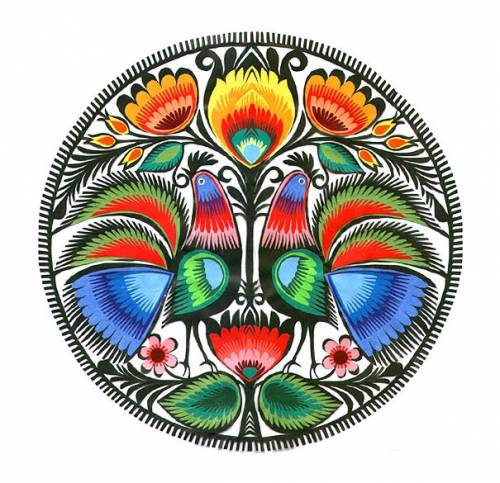Textiles
Manufactures of L. Geyer, currently the Central Museum of Textiles
Łódź is known as one of the most important worldwide centres of textile industry, which grew in the second half of the nineteenth and twentieth century. Its importance was formed in less than a hundred years, between 1821 and 1914. The development of our city on a major scale began in 1820, when the decision of government was to include Łódź to the group of industrial settlements and give it a role of the centre of textile and drapery. This decision initiated the development of "Industrial Łódź." Since that time, great entrepreneurs and workers from Brandenburg, Bohemia, Moravia and Saxony – from regions that have a long tradition of weaving crafts – began to arrive to Łódź. The first settlers arrived in Łódź in 1822, initially they were drapers or croppers. Over time, immigration of weavers associated with cotton and linen began. A very dynamic career of Łódź was due to cotton industry (spinning and weaving). Strong demand for cotton products created favourable conditions for the establishment of manufactories with the use of tools machines and hydraulic drive (cotton spinning, printing and dyeing of cotton goods.) Particularly favourable market conditions for cotton production followed the abolition of customs borders with Russia in 1851, they were also properly taken advantage of by the manufacturers of cotton fabrics in Łódź. In the years 1831 - 1870 in Łódź, the largest modern technical enterprises of cotton formed in the Polish Kingdom. Manufactures of L. Geyer, T. Grohman, K. Scheibler and I. Poznanski lead to industrial revolution in the industry.
In those days, Łódź grew up to be the largest textile centre in the Poland. The rapid development of the city in a relatively short period of time means that today Łódź is a unique European city with a unique spatial and architectural form. Currently, there is no sound of the roaring machinery within the walls of big textile factories, as they have been transformed into shopping and entertainment centres, hotels, cultural institutions - thanks to its unique buildings, Łódź has got a unique atmosphere.
Our city still cherishes textile traditions - rapidly functioning department of fashion design at the Academy of Fine Arts might serve as a proof, not to mention numerous competitions that encourage young designers to help them in the career world.
Another example is the International Triennial of Tapestry, organized by the Central Museum of Textiles, where unique works by artists engaged in weaving are presented. Various materials and techniques are used.
In addition to traditional woven tapestry, we can see fabrics made of glass, plastic or wicker. The only requirement is to use the warp and weft.
The Central Museum of Textiles also organizes workshops for amateurs of creative crafts; educational programs and museum lessons bring the participants closer to the reviving art of folk crafts (such as embroidery, lace, knitting) and handicraft competitions and exhibitions aimed at amateur artists, of which most known is the "Golden Needle" – an annual National Exhibition of Cross Stitch.
In the Łódź region there are places with long traditions of crafts and folklore. The most interesting ethnographic areas, retaining the traditional elements of culture are: Łowicz region, Opoczno and Sieradz. These regions attract the attention by their colorful folk costumes, abundance of art and still living tradition of rites and customs. The most notable in this respect is the Łowicz folklore, which is one of the most recognizable in Poland.
Characteristic elements of the Łowicz region are the folk handicrafts, including cutouts of colored paper, as well as music, dance and original costume of Łowicz.
Paper cutting
Lowicz cutouts are true works of art, shining with all colors of the rainbow. Cutouts can be exhibited both in the rustic and modern interior. They look perfect in both rich frames and simple clip frames. In Poland, in the Łowicz region they served as a decoration in the rural chambers since the second half of the nineteenth century. Among other materials, they were cut out from glossy paper with special scissors for shearing sheep.
They were also stuck on the walls, ceiling joists or furnace tiles. We divide them into three groups:
- Round "Gwiozdy” ("Stars”)
- rectangular "Kodry"
- Vertical "Ribbons"
On the cutouts one will find symmetrical and geometric plant motifs, scenes from peasant life: work, holidays, folk rituals. Currently, amateur artists maintain the tradition of cutting.

| 